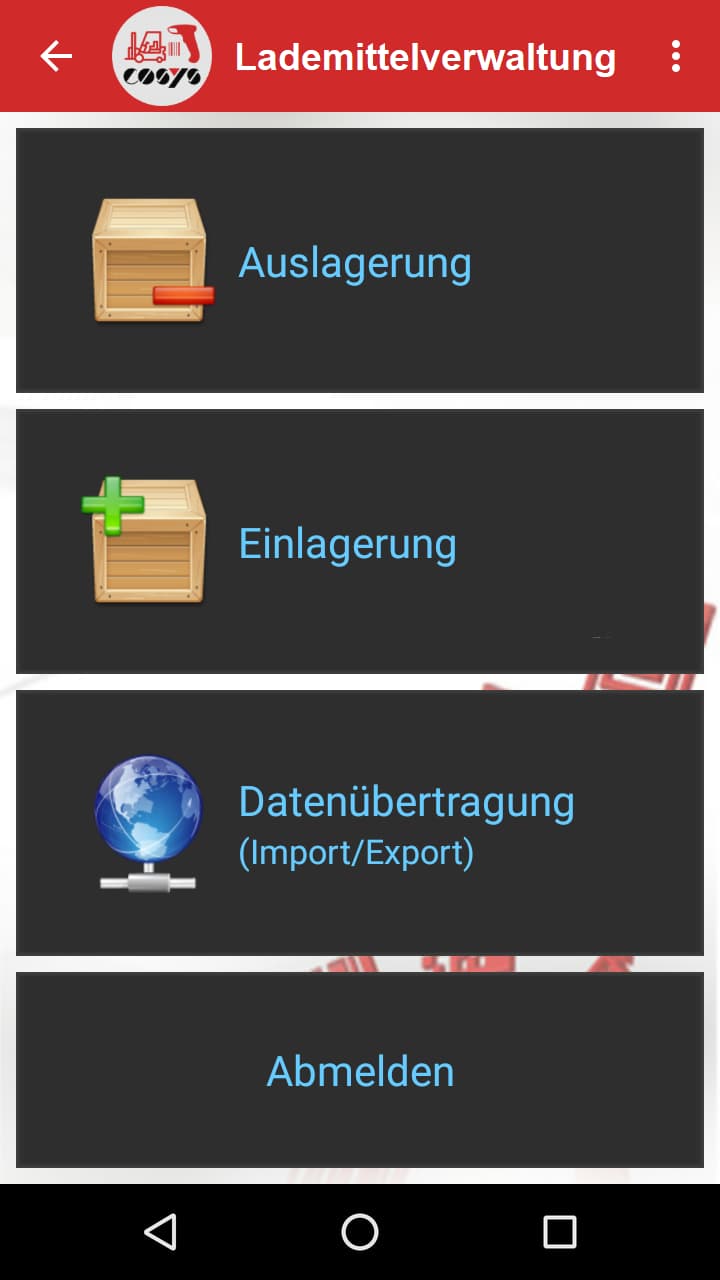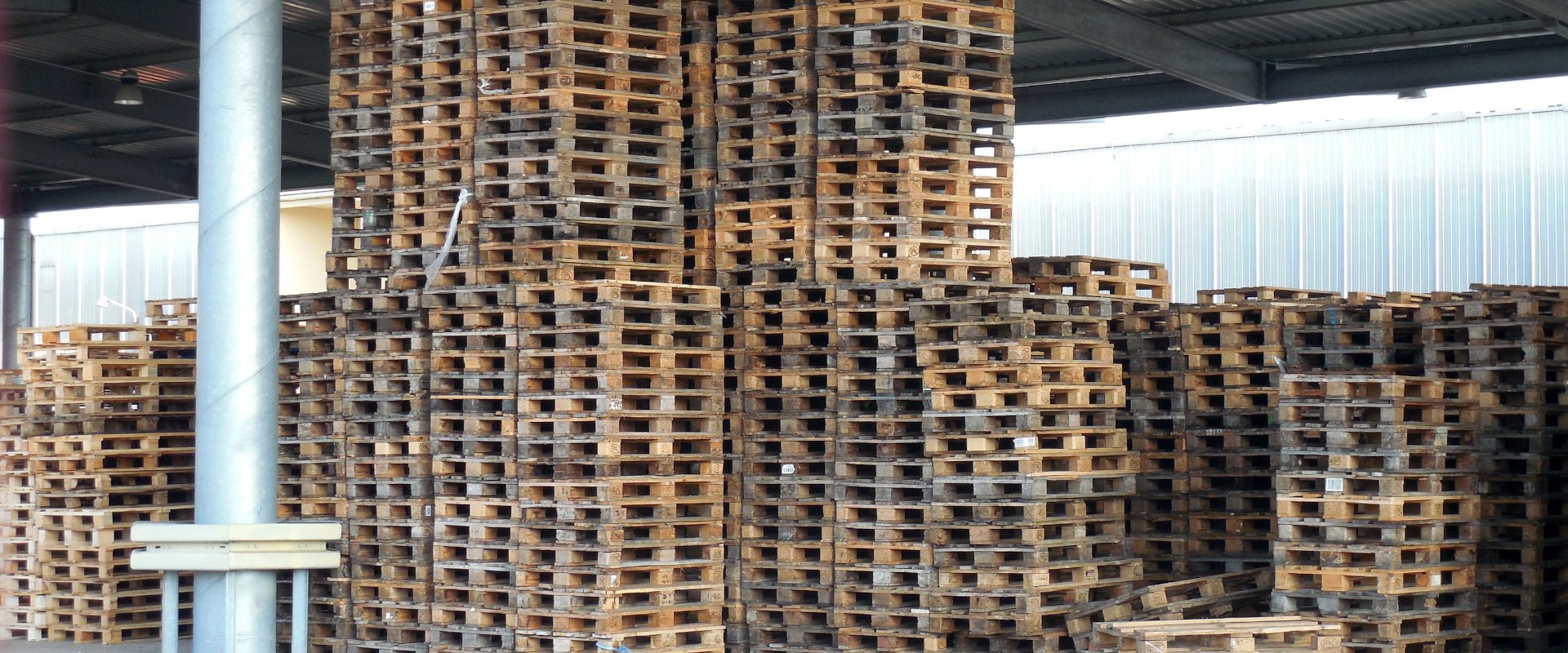

Pallet account and pallet account software
With the pallet account, you can record the inflow and outflow of your loading equipment such as pallets, EPAL, containers or skeleton containers and digitally document the whereabouts of your valuable load carriers.Pallet account and loading equipment management software from COSYS
The pallet account is an important tool for you as a company to keep track of your valuable load carriers, because loss of loading equipment has never been as expensive as it is today. Every day, numerous load carriers such as pallets, containers, mesh boxes or crates are lost during or after transport without you or your drivers having done anything wrong. Most of the load carriers are lost at customers where they remain uncontrolled for an indefinite period of time or where they are used again for other purposes. For you as a company, this loss means high expenses and costs in the replacement of load carriers. Scarce resources and supply bottlenecks make it difficult to purchase new pallets and drive up prices for EPAL.
The cause for the loss of loading equipment often lies in a too intransparent loading and handover of the loading equipment and containers to the supplier, the forwarding agent or the wholesaler. Often they are loaded dynamically on the transport vehicle and not shown separately in the delivery bill. Especially at suppliers, pallets and co are only passed through and not recorded in a pallet account or tracking system. As a result, the overview of your valuable load carriers is quickly lost. In addition, paper-based pallet bills are not much help either, as handwritten bills or entire pallet bills are quickly lost.
COSYS helps you to document your pallet account digitally and clearly. With the COSYS pallet account software you record all loading equipment movements digitally with amobile device (MDE device, smartphone or tablet). Through mobile data capture (barcode scanning) in an intelligent COSYS app, you document the whereabouts of your pallets at your customers. Thanks to thecloud-based orOn-Premise Backends you have entered all the loading equipment in the pallet account of theCOSYS WebDesk im Blick und können diese verwalten, rückverfolgen orBestände und Lademittelverläufe nachträglich bearbeiten / korrigieren. Von der Beladung an der Laderampe bis zum Ausgleich des Palettenkontos profitieren Sie mit der Palettenkonto Software von einer lückenlosen Rückverfolgung Ihrer Ladungsträger. Da Sie mit COSYS immer alle Lademittel im Überblick haben und diese rückverfolgen können, verhindern Sie effizient den Schwund von Lademitteln.
Signature capture during handover
Overview of the pallet account and movements in COSYS WebDesk
Parts lists for specific load carriers
Pallet account available as on-premise or cloud solution
Automatic backups in the COSYS backend (only for cloud solutions)
Printing and sending pallet account reports
Assignment of pallets to a customer
Detection of the pallets on exits and entrances
Damage documentation through photo capture
Flexible connections and interfaces to other systems (e.g. SAP)
Import and export function for master data and pallet account data
Automated e-mail notification of pallet status
Registration and tracking of all pallets and loading equipment
Adaptations of the pallet account software to customer-specific processes
Elimination of paper-based processes reduces susceptibility to errors
Transparency in transport processes
Intuitive UI for easy operation
Minimization of loading shrinkage
Cost and time savings
Pallet account software modules
If your pallets and containers are marked with barcodes, they are scanned via the mobile device´s integrated scanner. If no pallet barcode is available, the load carrier type is selected from a drop-down list in the pallet account app and the quantity to be entered. The entry of serial number and non-serial number managed pallets is possible as well as parts list functions.
For tracing the pallet, the loading or unloading customer is selected in the app. In this way, you store a storage location for each pallet and can track it.
In a clearly arranged pallet account in the app, all entered pallets are displayed, including the associated data. After the pallet and load carrier entry, the entry is confirmed so that the data is automatically sent to the COSYS backend.
The user-friendly user interface of the Pallet Account App enables every user to quickly record pallets and loading equipment. Field-tested software logics inform the user in case of errors. Incorrect entries and user errors are thus completely avoided.
Pallet account monitoring
All recorded pallets and the associated data are transferred to the COSYS backend and can be clearly viewed and managed in the COSYS WebDesk. In the COSYS WebDesk you always have an overview of your pallet account and can view the warehouse and customer stock as well as the movement history of all loading equipment. Recorded signatures and damage documentation are also displayed accordingly.
Thanks to Report, COSYS WebDesk offers versatile evaluation options of your pallet account.
The COSYS WebDesk can be used by you as a supplement to the default system (e.g. ERP system, Access databases, SQL databases or .csv and .xlsx files). Thanks to flexible connection options and standardized interfaces, the COSYS pallet account solution can be easily connected to your systems.
Optionally, the COSYS backend can be installed on premise or hosted in the cloud as a SaaS solution.
Try our free pallet account app and see for yourself!
Pallet Account FAQs
A pallet account is an account that breaks down pallet exchange transactions within a certain period of time and records inflows and outflows. A pallet account is used to document the issue and receipt of pallets and load carriers. The pallet account is an important part of tracking load carriers and helps maintain claims against third parties.
With a pallet account, issues and receipts are posted in the pallet stock so that it is possible to trace all load carriers. If pallets are booked from the warehouse stock, the pallet is assigned to the corresponding customer to whom the pallet is delivered. If the pallet comes back, it is added to the own stock again.
Pallet exchange is an exchange of equivalent pallets (EPAL or CHEP) between two economic operators.
If a company supplies another company with fully loaded load carriers, it exchanges the loaded load carrier for an empty load carrier with the same qualitative value (example: exchange of a loaded EPAL pallet for an empty EPAL pallet).

















